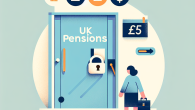
Mental Health and Money: How the FCA Is Addressing Vulnerable Populations
The Hidden Costs of Banking: What They Don’t Want You to Know
Let’s start with a warm cup of truth: banks are not your best friend. Sure, they have quaint lobbies and candy at the teller’s desk, but behind that polished veneer often lies a labyrinth of hidden fees, fine-print traps, and interest rate gimmicks that quietly erode your financial well-being.
Hi there, I’m Eleanor Cartwright — you can call me Ellie. I’ve spent most of my three-decade career elbow-deep in financial regulations, consumer rights, and advocacy. And let me tell you: if I had a dollar for every person who got blindsided by quiet charges on their bank statement, I could fund a nationwide financial literacy campaign out of pocket.
Unmasking the Common Hidden Costs
Banks thrive on the “nickel and dime” game. These charges might seem small in isolation, but over time, they add up — and not in your favor. Here’s a roundup of the most pervasive hidden costs you’ll find in your typical banking relationship.
1. Overdraft and Nonsufficient Funds (NSF) Fees
Overdraft fees were initially designed as a customer convenience — a “safety net” to cover you when your balance dips below zero. But in practice, they can be predatory.
Imagine buying a $3.50 coffee with your debit card and unknowingly overdrawing your account. With some banks, that coffee could cost you upwards of $35. And worse: if multiple transactions hit while you’re overdrawn, those fees can snowball.
Pro tip: Opt-in only if you understand the risks. Better yet, set up overdraft protection linked to a savings account.
2. ATM Fees: A Triple Threat
Let’s say you use an out-of-network ATM. You’ll likely be hit with:
- A fee from your bank
- A fee from the ATM owner
- And sometimes, a foreign transaction fee if abroad
All to access your own money. It’s absurd — and worse, totally legal.
3. Maintenance and Minimum Balance Fees
“Maintenance fee” sounds so benign, doesn’t it? As if your bank account is getting its oil changed. In reality, it’s just a charge for not meeting arbitrary deposit or balance requirements.
Many accounts charge $5 to $15 per month if your balance dips below a minimum — even if only temporarily. That’s up to $180 per year just for the privilege of storing your cash there.
4. Secure? Yes. Transparent? Not Really.
Banks often tout free services like “fraud alerts,” but sometimes they charge you for the paper verification or phone assistance related to those alerts. Always read the fine print when opting into ‘security services.’
5. Early Account Closure Penalties
Open an account with a promotional bonus, then close it within a few months? Prepare to surrender that bonus — and maybe pay a closure fee for your trouble.
Some banks require accounts to remain open for 3–6 months to retain rewards. Others quietly subtract small charges from your balance until it reaches zero, then slap you with an “inactivity fee.”
Why It’s a Systemic Problem — Not Just a Consumer Mistake
The problem isn’t that customers aren’t careful — it’s that the financial system purposely hides behind convoluted jargon. Banks know a 48-page disclosure document won’t be read by most consumers. These contracts are designed to disempower.
In a world where financial literacy is unequal, banks hold vastly more power than their customers. And until regulators make itemized, standardized bank fees mandatory, the game remains rigged against you.
How Regulation Has Tried — and Failed — to Help
The Truth in Savings Act, passed in 1991, was supposed to increase transparency in how banks disclose fees and interest rates. But its reliance on voluntary clarity — instead of mandatory formatting — leaves too much wiggle room. The result?
- Disclosures still vary between institutions
- Fee stacks remain poorly understood
- Penalty charges remain profit centers
More recently, the Consumer Financial Protection Bureau (CFPB) has made waves by cracking down on what it calls “junk fees.” In a 2023 initiative, the agency accused some banks of reliance on deceptive practices, including multiple overdraft fees on a single day.
But for every move forward, the banking lobby pushes two steps back. The fight over transparency is far from over — and you need to be engaged in it.
Your Rights as a Banking Customer
Despite the power imbalance, don’t let yourself be steamrolled. You have enforceable rights as a consumer:
- Access to clear fee disclosures: Request a fee schedule at any time from any federally insured bank.
- Ability to opt out of overdraft services: You can decline “courtesy” overdraft coverage — and avoid the price-tag that comes with it.
- Recourse via CFPB: You can file a formal complaint if your bank engages in deceptive or unfair practices. Visit consumerfinance.gov to start the process.
- Fee reimbursement: Many banks will reverse fees as a one-time courtesy. Just ask firmly and politely.
How to Protect Yourself (And Your Wallet)
Don’t let your guard down just because your account comes with a shiny app and a smiling banker. Here’s how to armor up as a modern banking consumer:
1. Read and Compare Fee Schedules
Most banks publish their fee disclosures online. Read them — thoroughly. Then compare with competing institutions. Online banks and credit unions often offer lower fees (or none at all) because they have fewer operational costs.
2. Automate Balance Alerts
Set up SMS or email alerts when your balance gets low. It’s a small move that can prevent costly overdrafts.
3. Check Your Statement Line by Line
It’s tedious, but absolutely necessary. Banks are legally allowed to charge fees as disclosed, but billing errors still happen — and you’ll only catch them if you’re vigilant.
4. Ask Questions — Lots of Them
You are entitled to clarity. If you don’t understand what a service or fee entails, press for an answer. Your banker works for you, not the other way around.
Bottom Line: Knowledge Is Your Currency
Banks aren’t villains — but they operate within a structure designed to skim profits quietly and consistently. Your best defense isn’t just knowing your rights; it’s being willing to assert them.
After all, you worked hard for your money. It shouldn’t disappear because you didn’t read page 27 of your bank’s “Client Relationship Agreement.”
Need help tracking unethical fee practices or learning how to file a CFPB complaint? Reach out via our contact page. We’re here to make sure your financial policies serve you — not the other way around.
Until next time, stay sharp — and stay in charge.









Leave a Reply